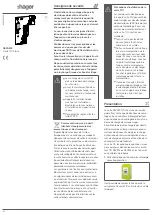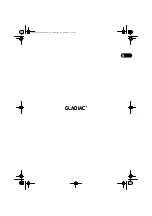
Chapter 6
96
Internally Cascaded Clock
The DT300 Series board supports internal cascading on counters 0 and 1, 1 and 2, and 2 and 3.
Cascading counters internally is an effective way to create a 32-bit counter without externally
connecting two counters together.
Using software, specify internal cascade mode, then specify the clock input and gate input for
the first counter in the cascaded pair. The clock output signal from first counter is the clock
input signal of the second counter. For example, if counters 1 and 2 are cascaded, specify the
clock input and gate input for counter 1.
The rising edge of the clock input signal is active.
Gate Types
The active edge or level of the gate input to the counter enables counter/timer operations. The
operation starts when the clock input signal is received. The DT300 Series board provides the
following gate input types:
•
None
–
A software command enables any specified counter/timer operation immediately
after execution. This gate type is useful for all counter/timer modes.
•
Logic-low level external gate input
–
Enables a counter/timer operation when the
external gate signal is low, and disables the counter/timer operation when the external
gate signal is high. Note that this gate type is used only for event counting, frequency
measurement, and rate generation; refer to
for more information on these modes.
•
Logic-high level external gate input
–
Enables a counter/timer operation when the
external gate signal is high, and disables a counter/timer operation when the external
gate signal is low. Note that this gate type is used only for event counting, frequency
measurement, and rate generation; refer to
for more information on these modes.
•
Falling-edge external gate input –
Triggers a counter/timer operation on the transition
from the high level to the low level (falling edge). In software, this is called a low edge
gate type. Note that this gate type is used only for one-shot and repetitive one-shot mode;
refer to
for more information on these modes.
•
Rising-edge external gate input –
Triggers a counter/timer operation on the transition
from the low level to the high level (rising edge). In software, this is called a high-edge
gate type. Note that this gate type is used only for one-shot and repetitive one-shot mode;
refer to
for more information on these modes.
Specify the gate type in software. Connect an external gate input to the board through the
STP300 screw terminal panel as follows:
• For Counter 0, connect the external gate signal to screw terminal TB28 (pin 39 of connector
J1)
• For Counter 1, connect the external gate signal to screw terminal TB32 (pin 5 of connector
J1)
• For Counter 2, connect the external gate signal to screw terminal TB36 (pin 38 of connector
J1)
Summary of Contents for DT300 Series
Page 1: ...DT300 Series UM 16501 T User s Manual Title Page ...
Page 4: ......
Page 10: ...Contents 10 ...
Page 14: ...About this Manual 14 ...
Page 15: ...15 1 Overview Features 16 Supported Software 18 Accessories 19 Getting Started Procedure 20 ...
Page 21: ...Part 1 Getting Started ...
Page 22: ......
Page 58: ...Chapter 4 58 ...
Page 69: ...Part 2 Using Your Board ...
Page 70: ......
Page 106: ...Chapter 6 106 ...
Page 124: ...Chapter 8 124 ...
Page 130: ...Chapter 9 130 ...
Page 156: ...Appendix C 156 ...
Page 164: ...Index 164 ...
















































